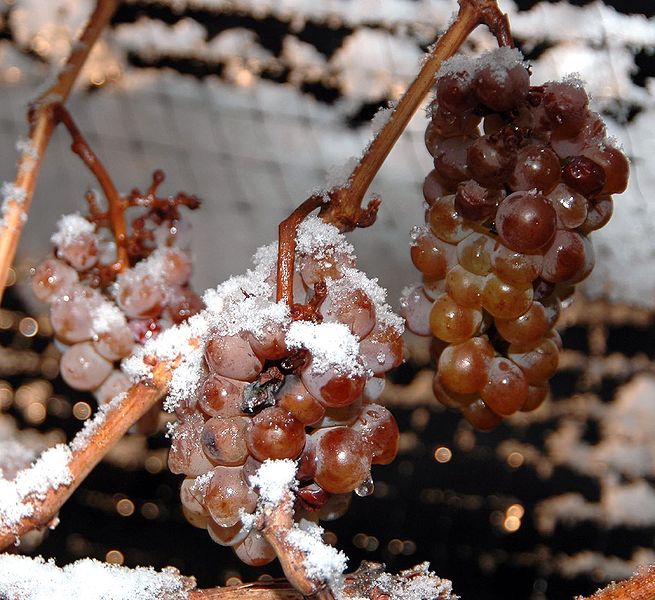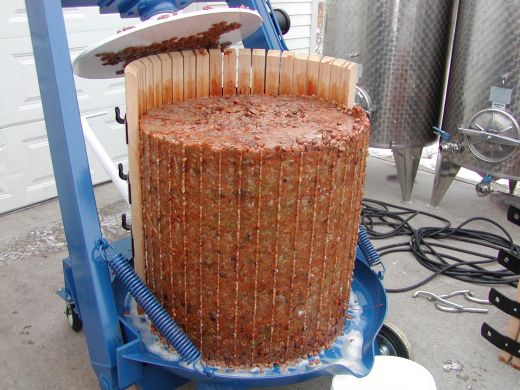Ice Wine Production
 Natural ice wines require a hard freeze (by law in Canada 17 °F or colder, and in Germany 19 °F or colder), to occur sometime after the grapes are ripe, which means that the grapes may hang on the vine for several months following the normal harvest. If a freeze does not come quickly enough, the grapes may rot and the crop will be lost. If the freeze is too severe, no juice can be extracted. Vineland Winery in Ontario once broke their pneumatic press in the 1990s while pressing the frozen grapes because they were too hard. The longer the harvest is delayed, the
Natural ice wines require a hard freeze (by law in Canada 17 °F or colder, and in Germany 19 °F or colder), to occur sometime after the grapes are ripe, which means that the grapes may hang on the vine for several months following the normal harvest. If a freeze does not come quickly enough, the grapes may rot and the crop will be lost. If the freeze is too severe, no juice can be extracted. Vineland Winery in Ontario once broke their pneumatic press in the 1990s while pressing the frozen grapes because they were too hard. The longer the harvest is delayed, the  more fruit will be lost to wild animals and dropped fruit. Since the fruit must be pressed while it is still frozen, pickers often must work at night or very early in the morning, harvesting the grapes within a few hours, while cellar workers must work in unheated spaces.
more fruit will be lost to wild animals and dropped fruit. Since the fruit must be pressed while it is still frozen, pickers often must work at night or very early in the morning, harvesting the grapes within a few hours, while cellar workers must work in unheated spaces.
In Austria, Germany, and Canada, the grapes must freeze naturally to be called ice wine. In other  countries, some winemakers use cryoextraction (that is, mechanical freezing) to simulate the effect of a frost and typically do not leave the grapes to hang for extended periods as is done with natural ice wines. These non-traditional ice wines are sometimes referred to as "icebox wines". An example is Bonny Doon's Vin de Glacière.
countries, some winemakers use cryoextraction (that is, mechanical freezing) to simulate the effect of a frost and typically do not leave the grapes to hang for extended periods as is done with natural ice wines. These non-traditional ice wines are sometimes referred to as "icebox wines". An example is Bonny Doon's Vin de Glacière.
The high sugar level in the must leads to a slower-than-normal fermentation. It may take months to complete the fermentation (compared to days or weeks for regular wines) and special strains of yeasts should be used. Because of the lower yield of grape musts and the difficulty of processing, ice wines are significantly more expensive than table wines. They are often sold in half-bottle volume (375 ml) or the even smaller 200ml bottle.


